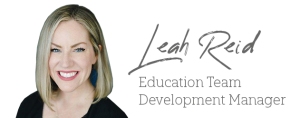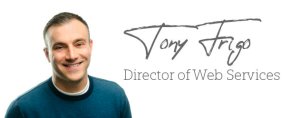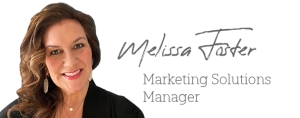Your firm’s biggest vulnerability

It used to be a small but consistent drumbeat from firms. But now, the whole band is playing—and almost every firm we talk to is dealing with the challenge of having and hiring enough staff.
Whether it’s more work coming in the door than you can handle, or just hearing that your staff can’t deal with it anymore, staffing is, in my opinion, the biggest vulnerability your firm has today.
At the evening reception of a conference I attended a couple of months ago, one of our members introduced me to a staff member he’d brought to the conference. As we chatted, I asked her how long she’d been with the firm. Three years, she told me.
Then I asked her how she liked it, and her response really stuck with me. She said she’d been in accounting for 15 years, but this was her first public accounting position, and she’d never worked harder in her life. And I think her answer may sum up why firms are struggling with building and keeping their teams.
Now, I’m not sure I’ll impart anything profound in this article that will solve what seems like a significant problem across many industries and professions. But I do think I can offer some advice that will have a positive impact on this glaring problem.
Know your challenges
It would probably be helpful to start by naming some of the challenges I universally hear:
- Workload — At the top of the list is too much stuff to get done in a compressed timeframe. (Note: No shock on this one!)
- Complexity — Too much complexity and not enough clarity. Firms continue to take on more and expect the existing team to just figure it out.
- Leadership — There’s lots of discussion about change, but very little really changes.
You’d know better than me what you’re hearing from your own team. But it seems to me that it has a lot more to do with frustration than it does with pay, personalities, mistreatment or any other cause. Yes, those situations exist, but frustration is the leading cause. So, for the sake of this article, let’s focus on minimizing frustration: frustration with workload, complexity and leadership, to be more specific.
I’ve come to realize that much of the driver for frustration centers around what I think are two of the most important leadership challenges in firms today. One is firm culture; the other is the firm’s business model. I believe these two concepts are deeply intertwined.
Know your beliefs
Let’s start with culture because I think it informs a firm’s business model. Firm culture is a challenging thing to put your finger on, so let’s think of it as the collective beliefs and behaviors of the firm.
Which naturally brings up a couple of questions: First, what do you believe about every aspect of your firm? And second (but equally important), do your behaviors support those beliefs?
Here are a few ideas to get you started. How would you answer the following?
- How much should you and your team work?
- How much flexibility, location, time, etc., should you and your team have?
- What do you believe about the technologies in your firm?
- What types of clients do you want to serve?
- What do you think about the kinds of clients you want to serve?
- How do you treat clients?
Know your firm
This is just a beginning, but it’s enough to show you that once you’ve articulated what we’ll call your collective beliefs, the impact on your business model will be significantly intertwined. Your collective behaviors must match all aspects of your beliefs and business model.
I hope you can see that by doing the challenging work of clearly articulating your culture (collective beliefs and behaviors) and then developing your business model as an outcome of the type of culture you want, many of the frustrations experienced by your team will start to minimize and even evaporate.
What’s clear to me is that we’re in a time of dramatic change—slow, incremental change may be too late for many people. Remember, people matter most in a firm.
And if that’s not clear to everyone, you won’t be able to buy enough pizzas or take enough Friday afternoons off during the post-busy season to create the culture needed today to run a modern accounting firm.

The value of an employee engagement survey


The unemployment rate has hit some of its lowest levels in American history. New small business applications have increased by almost 2 million since 2019. And according to the Washington Post, professional and business services added 74,000 jobs.
So, what does this mean for our culture? It means retaining our top employees is critical.
Without a culture where employees are valued, trusted, recognized and connected, the risk of losing them is real—and their departures could have a detrimental effect on our businesses.
The good news: Engaging employees and showing that you value them isn’t a hard feat. But it does take time, planning, authenticity and a shift in mindset.
We can no longer make assumptions about employee happiness or only focus on what works best for our bottom line. As leaders, we must listen to our employees’ needs and implement authentic employee engagement actions.
So, how do we truly understand what employees want and act on their needs? That’s where the employee engagement survey comes in.
The why and how of the employee engagement survey
Simply put, engagement is how someone thinks, feels and acts to help their organization achieve its goals. An employee engagement survey measures data to inform leaders about engagement levels. Just as important, it gives staff a voice—and what better way to feel engaged than to know that your feelings and observations are being heard?
If you’re not sure where to start with surveying your employees, we’ve got a few useful tips.
- The survey should be anonymous. When they’re assured of anonymity, people will be more inclined to speak truthfully and without fear of judgment.
- Assign a person or team to implement and roll out the survey. From the start, communicate the goals and anonymity of the survey, so everyone is clear about the why. This will bring a sense of ease to employees who may question the intention of the survey.
- Provide a timeframe for completion. Use an easy, accessible avenue like SurveyMonkey, Google or MS Forms to create the survey.
- Make it short and simple. The survey should take no more than 10-15 minutes to complete; you don’t want this to be a challenging task for employees to toil over during their already-busy days.
- Keep it directed. Use themed questions that resonate with the intended outcomes of the survey. For example, if your goals are to elicit overall engagement data to inform you of where improvements can be made, chunk questions about what makes staff feel appreciated and valued separately from those about how the firm can increase employees’ engagement.
- Avoid questions that may be difficult to answer or too personal. The 5-point Likert scales are a great way to measure data easily and assess trends. Don’t forget to offer an open-ended question for additional comments.
- Consider investing in an employee engagement tool. These tools are designed to engage with employees consistently and throughout the year so that as issues arise, they can be immediately addressed.
From survey to action plan
Once the feedback has been provided by the team, what’s the next step? Use the data to create an action plan. Just like any journey, the first step in an action plan is to determine your destination. Use the survey results to identify areas to address firm-wide…and make solid plans to tackle them.
This will take time and planning, so also implement a quick win or two (something you can quickly and easily put into place, like putting the Keurig coffee maker everyone’s asking for in the break room) to show staff that you’re dedicated to the effort while giving your engagement strategy momentum.
Display the survey results and store them where people can easily access the information. Taking these steps, with intention, is sure to lead to an environment of engagement within your firm.


Ensuring staff stays with you: Retention strategies

Staffing is an issue for many companies across all industries right now. Finding qualified candidates is challenging, so how do you ensure that the staff you do have don’t leave?
Recent studies have shown that in today’s tight job market, salary and benefits are a major factor in staff members’ decisions to leave a job. But if you’re already competitive on money—or worse, you can’t compete—how can you ensure your staff sticks around?
Here’s the best way to keep your staff happy, engaged and employed with your firm: Create an environment they don’t want to leave.
How? By setting clear job expectations, providing continuous feedback on their performance, offering staff growth plans, recognizing and celebrating milestones, and having a fantastic work environment with flexible work options that create an effective work-life balance.
Let’s talk a little about how these factors can equal or even outweigh more money at another firm.
Set clear job expectations
A common reason staff leave a job is a lack of clarity or training for their job. Make sure all your positions have job descriptions with clear expectations and performance goals. At least one of these expectations and goals should be tied to the firm’s goals. Managers should have regular conversations with each employee on why these goals and expectations are important to the firm, so the staff are clear about how their work matters—and how it ties into the overall picture.
Provide continuous feedback on performance
A formal review process can be daunting for both the reviewer and the reviewed. However, everyone generally wants to get better at their jobs, which requires giving and receiving feedback. We recommend that the meetings be less formal, more conversational and occur quarterly. Here’s a simple template you can follow:
- Discuss three strengths and accomplishments.
- Discuss three opportunities or improvements.
- Discuss one important thing for the staff to work on in the next quarter.
This template allows for continuous conversations between managers and staff, with steady improvement for staff and regular check-ins from managers. The quarterly check-ins can be compiled and used as a record for the annual review—which will be less intimidating since everything has been documented and discussed throughout the year.
Offer staff growth plans
The quarterly discussions are also perfect for exploring the staff’s growth plans. Having a defined growth plan helps each staff member understand what their future holds for them at the firm. If they feel they don’t have a future at your firm, they’ll start to look for a future somewhere else. Keep in mind, a growth plan doesn’t always mean advancement toward partnership or ownership. Sometimes it means staying in the same position for an entire career, but with added responsibilities.
Growth plans should include training and development. Consider what professional development or continuing education your staff needs for their career, what upskilling your firm needs for growth—like learning new technologies or systems—or what leadership skills need to be developed. Don’t forget about succession planning, either.
Recognize and celebrate milestones
Appreciation goes a long way—so don’t forget to recognize even the smallest victories. And you don’t need a big budget to do it. Often words are enough; a small token, if the right token, will go further than a large gesture.
Before you do anything, ask your staff how they like to be recognized, as some like a big showing in front of a crowd while others prefer personal notes or small gifts. Consider asking them if they have a favorite candy bar or snack that you can pick up for them as a thank you for a job well done. These types of gestures will often go further than an official reward and recognition system.
Celebrate everything you can: birthdays, anniversaries, notable achievements, promotions, rolling out a new process, finishing ahead of a deadline or landing a new client. The more you bond over things you’ve worked on and celebrated together, the more everyone will feel like they won’t want to leave such a supportive team.
Create an environment staff don’t want to leave
Offering a fantastic work environment with a great culture where people love coming to work is a great way to retain staff. But offering other perks—like working from home, or flexible scheduling so staff can find their own work-life balance—will increase loyalty and make sure your employees want to stay at your firm.
Often the best programs don’t cost a lot of money. They take just a little thinking outside the box.


Careers: More than just a landing page

These days, applicants are in high demand, with lots of choices available to them. More than ever—especially in the case of remote job openings—employment seekers are having to make judgment calls on which openings to pursue, which interviews to engage with and, ultimately, where they can settle in for longer-term employment.
Like it or not, we live in a world of judgment calls. In an ideal world, these decisions would all be “no brainers” because we’d have access to all the information needed to make the best decision. However, reality forces us to make a call based on whatever information we have on hand and available actions within a finite time frame.
So, let’s keep the ideal in mind, and try to close the differential gap with reality in a practical way.
In this article, I hope to arm you with some ideas on how your firm can think about career opportunities—and more ideas on where your firm can take quick action to improve your current implementations.
A career is not a product
Recently, our Education and Web teams have been discussing how we can help members make the most of their recruiting efforts. Historically, firms looking to hire would put up a Careers page, which more often than not contained a listing of positions and relevant skills/prerequisites…and not much else.
Now, if you’re looking to buy a product, this is a great layout. Give the specs, share some details and show how to buy. The problem with this layout for hiring, though, is that it does little to appeal to your target audience.
If you’re a modern firm, chances are you’re not looking to hire for a temporary position. Rather, you’re looking for an individual who will come join your firm to grow, mature and contribute increasing value to your clients.
Pause here for a moment and think about how you’re conveying this today. Is it just an open position posting via LinkedIn or another job posting site?
When your firm seeks to attract new talent to join your team, you’re asking those potential team members to envision how (or if) they’ll fit into what you’ve started. A solitary posting won’t do much to stand out in a market full of openings.
If you want someone to join your team for more than a finite contract assignment, you’ll need to connect with them on a more personal level. Will they fit into your culture? And more importantly, will becoming part of your firm help them grow and meet their career goals?
How to tell your firm’s story
Your website is prime real estate for showcasing your “Why you’ll love to work here” pitch for two reasons:
- You’ve got a lot of flexibility in how you approach the delivery of this message. Video, imagery, testimonials from current team members…they can all easily live and evolve on a website.
- Applicants will vet you and your firm by looking you up online.
Ross Desmond, a member coach from Rightworks’ Education team, recommends building up your firm’s story on your website to help you appeal to applicants by standing out from the crowd. Here are his tips on getting started:
- Start by publicly posting your mission, vision and values with your career openings. For many firms, this will be where the hard work starts, because you want to be sure these statements are accurate representations of what your firm is truly about, and where you spend your time and effort.
- Once you have your foundation of values, you can expand with supporting materials in the form of videos, images and other content.
- These messages should also extend beyond your Careers page and be reflected in your firm’s social media pages—another way applicants will vet your firm.
Interested in learning more about how you can improve your message to potential hires? Rightworks Academy members can check out our Career Page Creation guide (login required), a new education resource in our Online Learning Library. This guide, which includes helpful resources, will help you create a more appealing Career page on your firm’s Rightworks website.


Boost your company culture with social media

There’s more to social media than brand promotion and offering tax and advisory tips.
When you can shift focus away from hard selling, you’ll find there are many opportunities to highlight your brand personality and promote your company culture. An engaging social media presence can also help you build a company culture that influences your financial bottom line and builds client loyalty and employee trust.
Here are a few simple (and fun) strategies you can implement to create a stronger company culture through the power of social media.
Recognize and praise your employees
Your employees want to feel a connection with your firm. They care about their work and strive to do a great job. Appreciation for their excellent work matters, so keeping them motivated and boosting employee retention is vital.
Social media is the perfect tool for employee engagement. Use it to acknowledge your employees’ contributions. Employee spotlights, continuing education high fives, employee recognition for going above and beyond, or celebrating a work anniversary are all creative ways to celebrate and spread the love.
Use employee-generated content
Here are a couple of entertaining ways you can use employee-generated content on social media:
- Run “takeovers,” where members of different teams can share what their day at the firm looks like.
- Have a fun employee photo contest (or caption contest) to tie in with something momentous at the firm (e.g., the launch of a new service) and reward the winner with a prize. Get creative with it—ask your employees what they think would work and what would make them eager to participate.
- Share employees’ photos and video clips from firm events, firm sports teams, team building events or moments of collaboration.
Always ask permission before sharing content made by one of your team members. Assuming they give you the go-ahead, remember to tag them or mention them by name. Employee-generated content can come across as more authentic and less “staged” than traditional marketing content and shows that your employees are valued, have fun and enjoy working for you.
Humanize your brand
The beauty of social media is that it enables you to put a human face to your brand. If your social media channels are mostly made up of purely informative and sales-focused content, you’re missing a big opportunity. That type of content is necessary and informative, but it’s not enough by itself.
Imagine you’re choosing between two different accounting firms to work with. One has a very dry, professional, but boring social media presence. The other features engaging images, videos and captions that allow you to feel like you’re getting to know the firm, the brand and the people—in other words, the personality of the second firm. My guess is that you’d choose the fun, engaging firm in this scenario.
Think about your brand’s personality. How would you sum it up in three words, a sentence or a paragraph? Make sure the content you post reflects those values. If you’re ever stuck for content ideas or wondering what to post on Facebook or LinkedIn, return to that personality and ask yourself how you can reflect it on your firm’s social media channels.
Show off your values
What values does your company hold? In other words, what are the guiding principles by which decisions are made in your business? Your values are a huge part of your company culture, and you should make sure your company’s social media channels highlight and further those values.
For example, let’s say your brand strongly believes in making a difference to local communities, being environmentally conscious or giving to a charitable cause. Your social media channels are perfect places to highlight your favorite causes. Your clients will feel good about giving you their business, and your employees will feel great that their company has such great values. In other words, it’s a win-win!
Social media offers an amazing opportunity for modern, forward-thinking firms to be creative and thrive. Not only is it a tool to connect with clients and bring in new leads, but you can also use it to help boost and sustain a positive company culture.
Now it’s over to you—what creative ways will you use social media to showcase and develop your company culture?


The Thank You Economy
by Gary Vaynerchuk
Tribal Leadership Revised Edition: Leveraging Natural Groups to Build a Thriving Organization
by Dave Logan, John King and Halee Fischer-Wright
Rituals for Work: 50 Ways to Create Engagement, Shared Purpose, and a Culture that Can Adapt to Change
by Kursat Ozenc and Margaret Hagan
Bridging the Soft Skills Gap: How to Teach the Missing Basics to Today’s Young Talent
by Bruce Tulgan



Events for Rightworks Academy members
Check out these upcoming events exclusively for Rightworks Academy members:
August webinars
- August 10: Staff Training: Deliver exceptional service to the firm (Part 3 of the Career Development Series for admin staff)
- August 11: Staff Training: General Onvio update
- August 17: Staff Training: The employee exit interview strategy (Part 3 of the Employee Experience Series)
- August 24: Staff Training: Turning your services into products
- August 31: Staff Training: Implementing an effective year-round marketing and communications plan
Onvio Summer Series Trainings:
- August 9: Setting up Projects
- August 16: Using Time & Billing
- August 23: Using Projects
See the entire webinar schedule and register at Resources > Events > Webinars in your Rightworks.com account.
Events for members and non-members
Not a Rightworks Academy member yet? We have you covered with live and on-demand events where you can learn more about Rightworks or the latest hot topics in the profession.
Visit rightworks.com/resources/live-on-demand-webinars for a continually updated schedule of events.
The Modern Firm® Workshop
These live, in-person two-day events enable you to get your hands on Rightworks’ proven blueprint for structured, intentional firm transformation to stay relevant and thrive in today’s new world. Choose from two dates and locations:
- August 30-31 – Dallas, TX
- October 4-5 – San Diego, CA
For more information and to register, visit rightworks.com/community-academy/events.
Have you visited the Rightworks blog lately?
From tips on building a killer marketing program and creating an irresistible firm culture to diving into why benchmarking data and insights are essential to your firm, the Rightworks blog is full of tips and expert advice. Read bi-monthly posts from our profession’s well-known thought leader, Darren Root, along with guidance from our education coaches, directors and staff to help your accounting firm get better every day.
Bookmark rightworks.com/blog to check it out.
Member anniversaries
It’s time to recognize this month’s Rightworks Academy member anniversaries! Help us wish the following firms a Happy Anniversary:
1 Year
Jason Arsenault CPA LLC
SEK CPAs & Advisors
Wright CPA Group
Logan Graham & Conner Acct PC
Alan A. Lischer, CPA
Pyxis Financial, Inc.
Schumacher Sama CPAs
Blankenship CPA Group
Steadfast Bookkeeping Company LLC
CommonWealth Accountants & Counselors
5 Years
Graci Tax & Accounting, PA
Somnium Solution, Inc.
Knudtson & Company CPAs, PA
Zelitsky & Company LLC
Eikermann & Associates, LLC
CPA Solutions, LLC
Williams & Company P.C.
10 Years
Valley Tax Advisors, LLC
The Hagen Firm, PLLC
Dunning & Associates CPAs, LLC
Addicks CPA Firm LLP
Cornerstone CPA Group, PA
Keen & Company CPAs, PLLC
Longwood CPA
TKCPA, PLLC
Terrill & Company, Inc.
Frank & Frank LLP
DeWitt Giger LLP
Dohan CPA PA
Duncan, Messersmith & Associates
Congratulations on your success, and we look forward to celebrating many more anniversaries with you and your teams!

